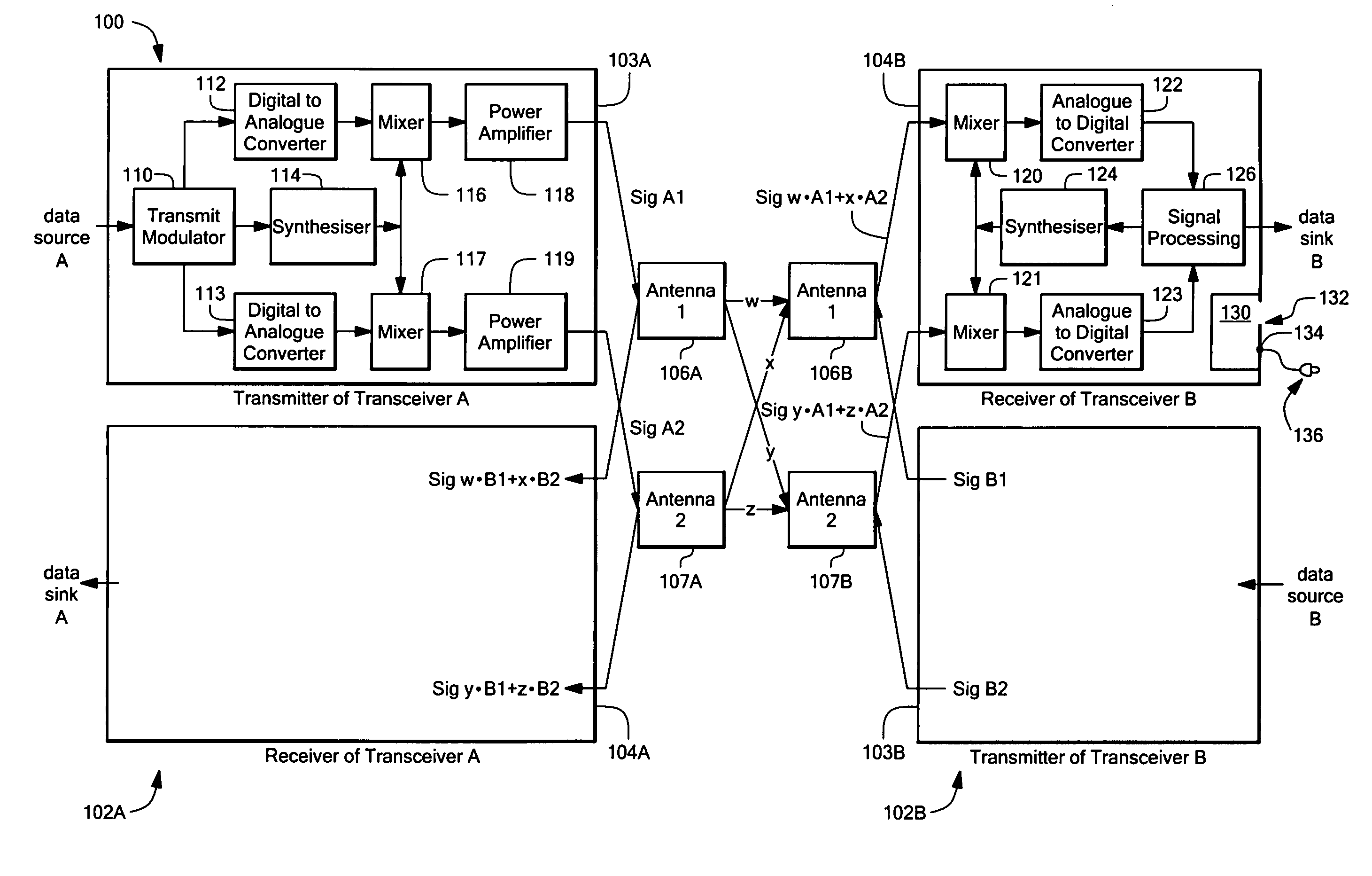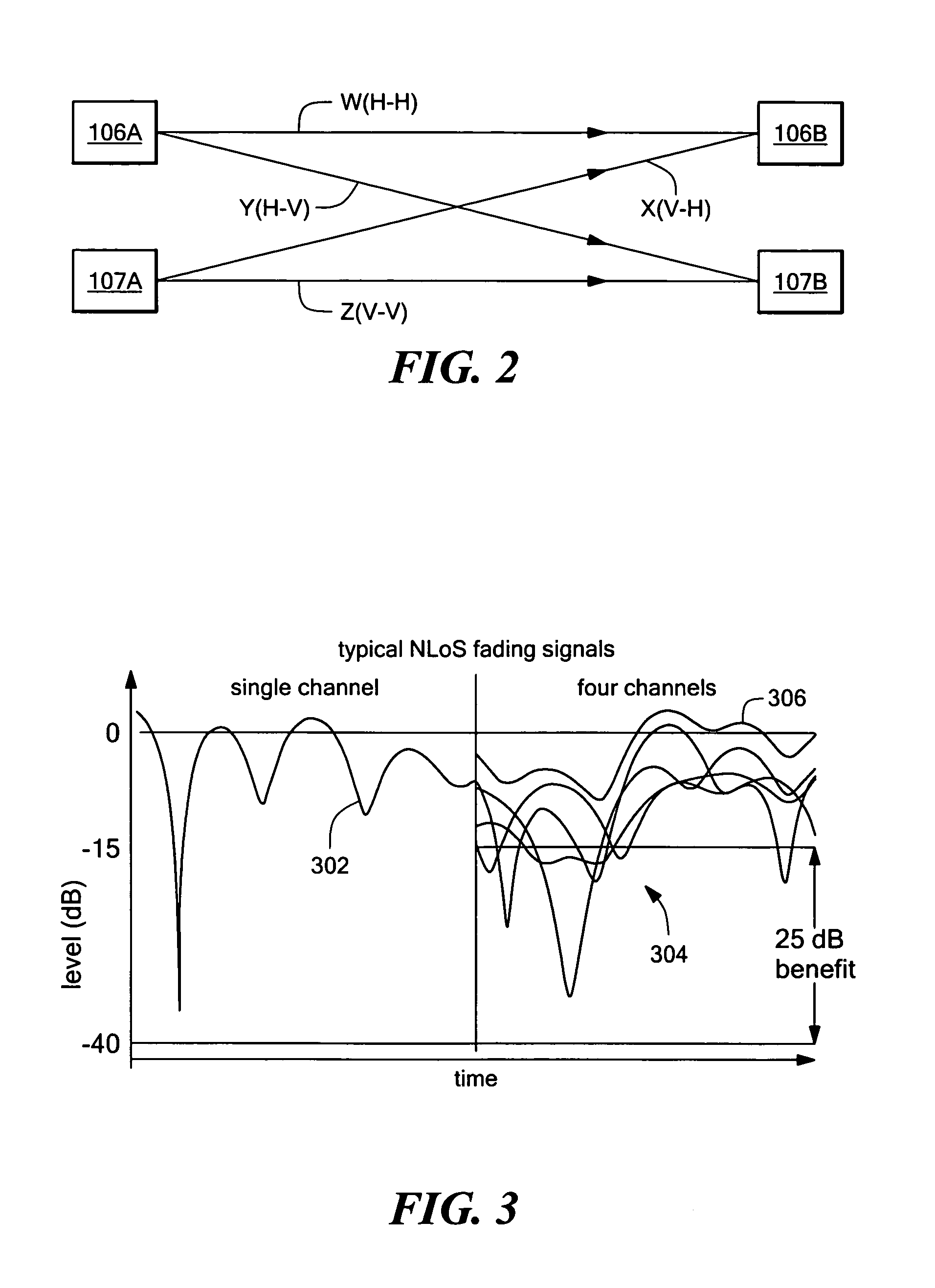Intelligent adaptive modulation in a multiple input multiple output (MIMO) wireless communications system
a wireless communication system and intelligent adaptive technology, applied in the field of adaptive modulation techniques for wireless broadband communication systems, can solve problems such as the level of distortion associated with modulation modes
- Summary
- Abstract
- Description
- Claims
- Application Information
AI Technical Summary
Benefits of technology
Problems solved by technology
Method used
Image
Examples
Embodiment Construction
[0036]U.S. Provisional Patent Application No. 60 / 565,611 filed Apr. 27, 2004 entitled WIRELESS COMMUNICATION SYSTEM AND METHOD is incorporated herein by reference.
[0037]A reduced cost, high performance, wireless broadband communications system is disclosed that can transmit signals over a communications link with multiple modes of diversity, thereby allowing signals having very low correlation to propagate over the link along multiple orthogonal paths. Because the multiple signal paths are de-correlated, the wireless communications system can more effectively apply space-time coding techniques for increasing data rates and spectral efficiencies. The presently disclosed wireless communications system can be implemented as a non-line-of-sight (NLOS) system or a line-of-sight (LOS) system. In the NLOS system, orthogonal frequency division modulation (OFDM) waveforms are employed to transmit signals over multiple orthogonal channels, thereby reducing multi-path interference and frequenc...
PUM
 Login to View More
Login to View More Abstract
Description
Claims
Application Information
 Login to View More
Login to View More - R&D
- Intellectual Property
- Life Sciences
- Materials
- Tech Scout
- Unparalleled Data Quality
- Higher Quality Content
- 60% Fewer Hallucinations
Browse by: Latest US Patents, China's latest patents, Technical Efficacy Thesaurus, Application Domain, Technology Topic, Popular Technical Reports.
© 2025 PatSnap. All rights reserved.Legal|Privacy policy|Modern Slavery Act Transparency Statement|Sitemap|About US| Contact US: help@patsnap.com



